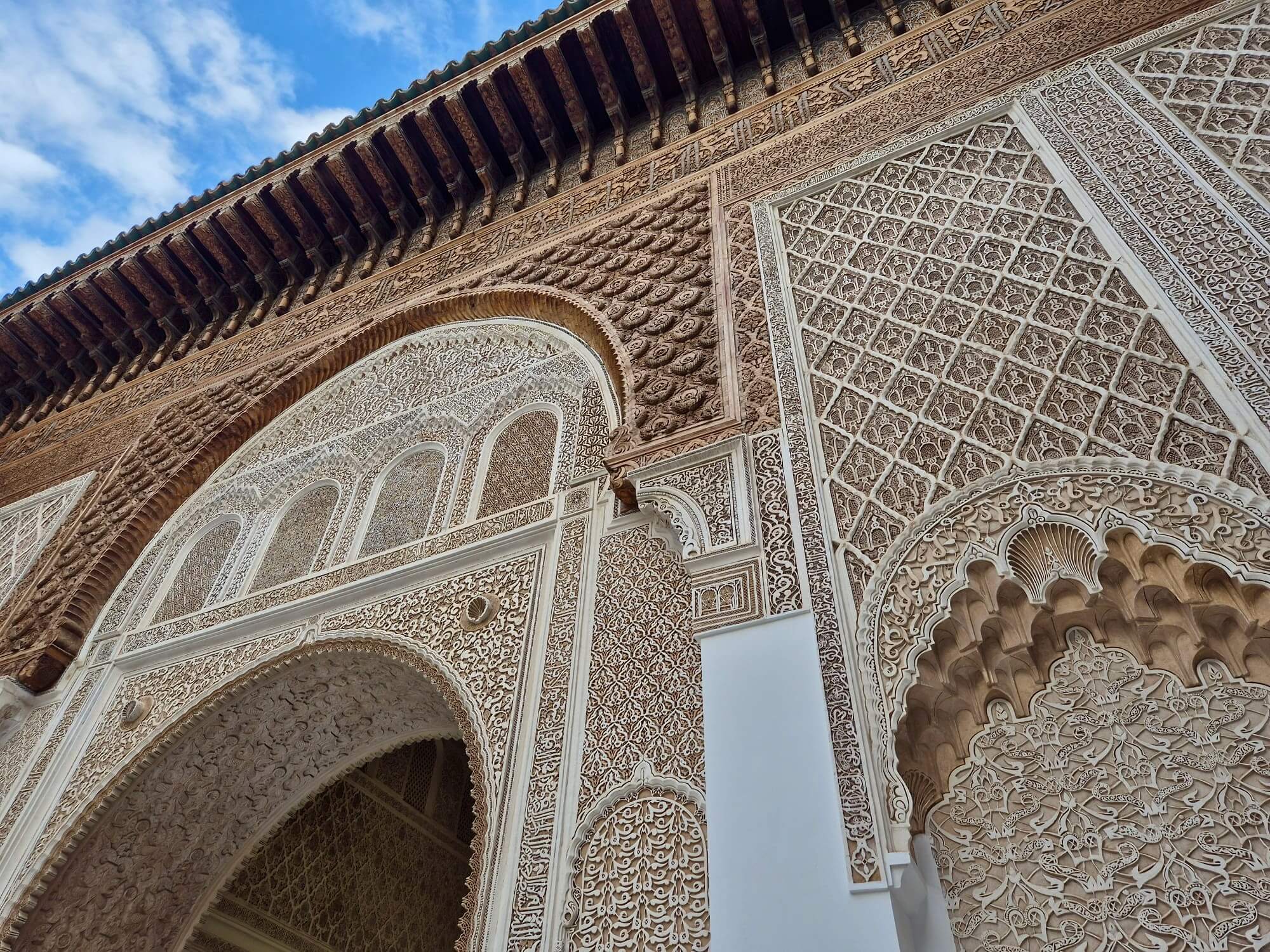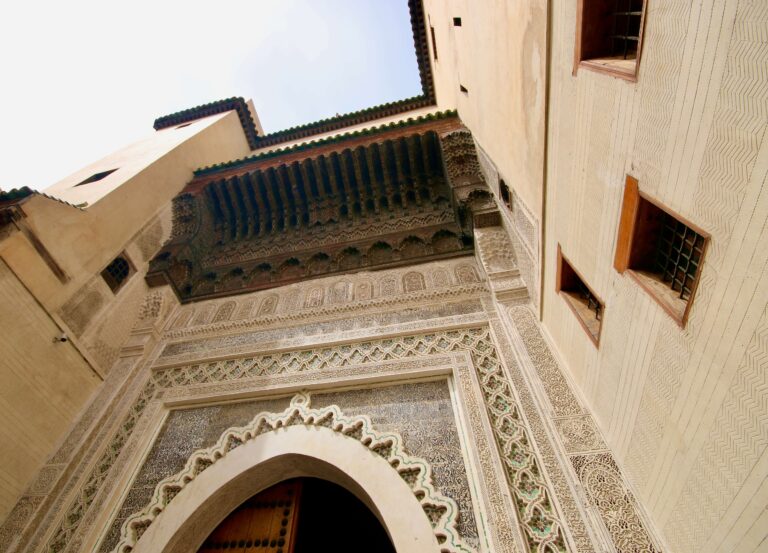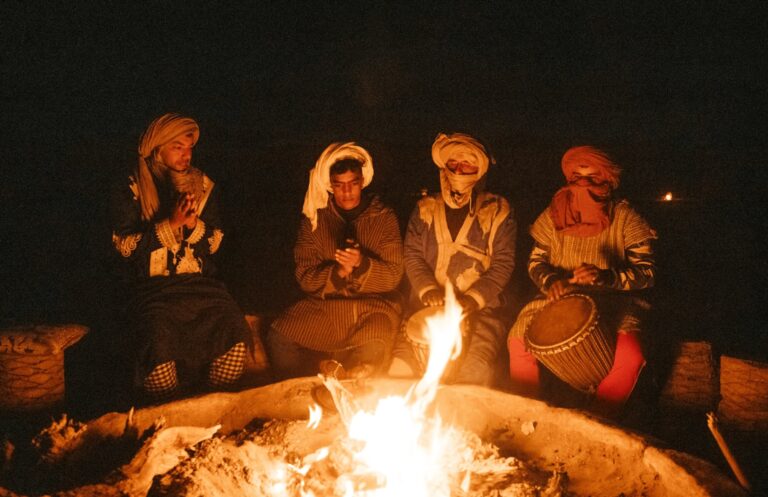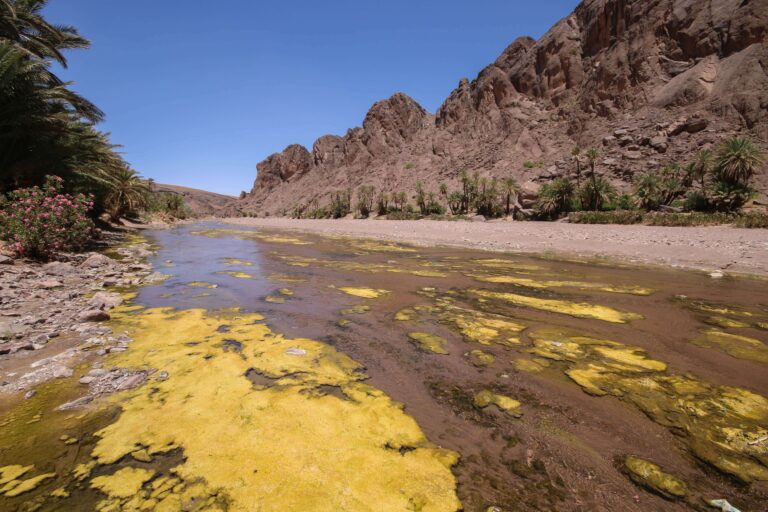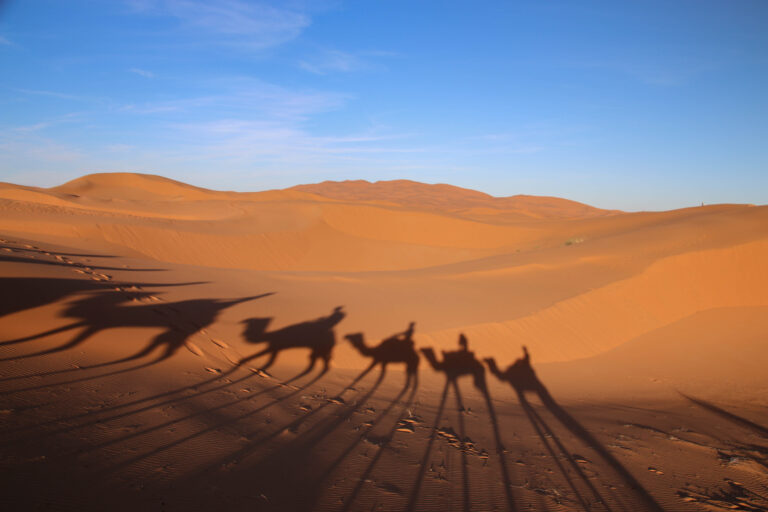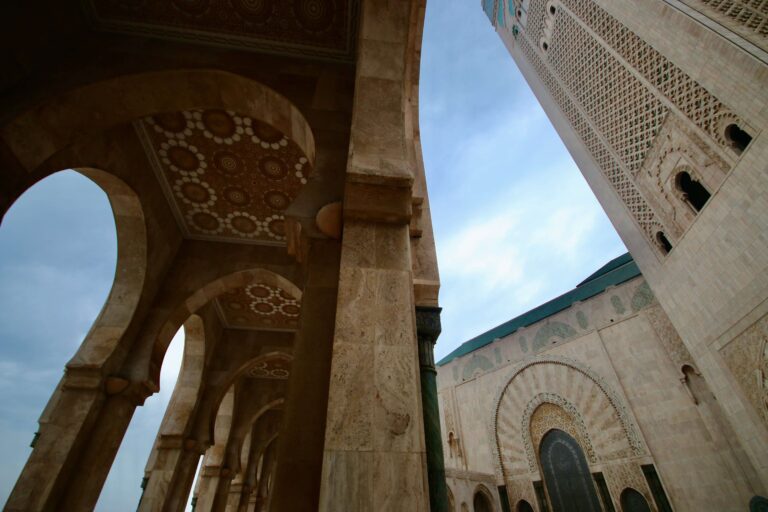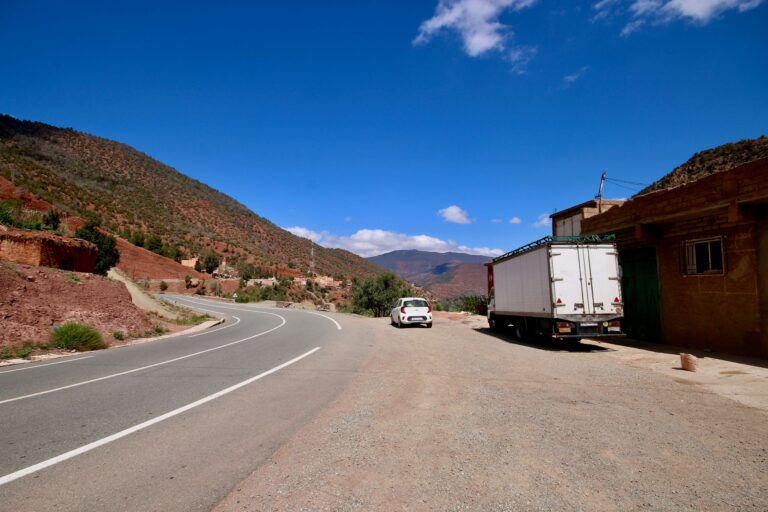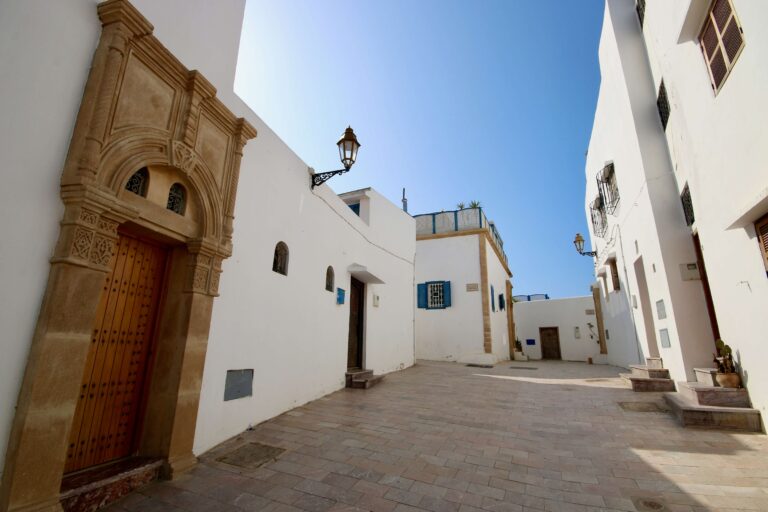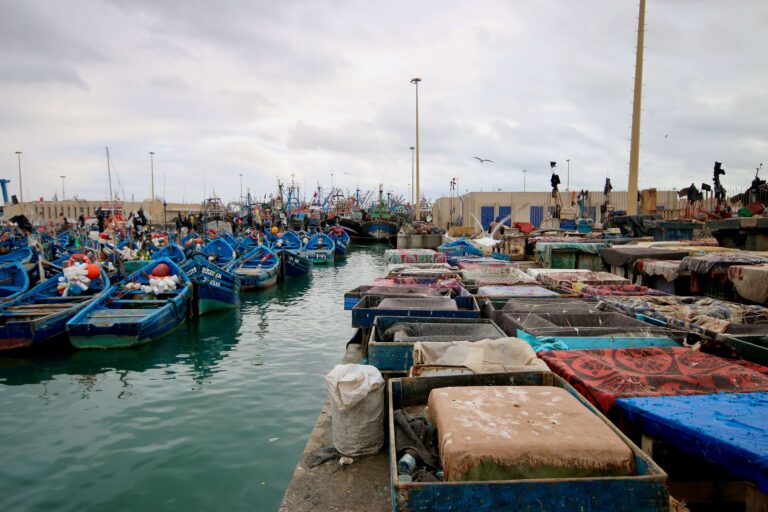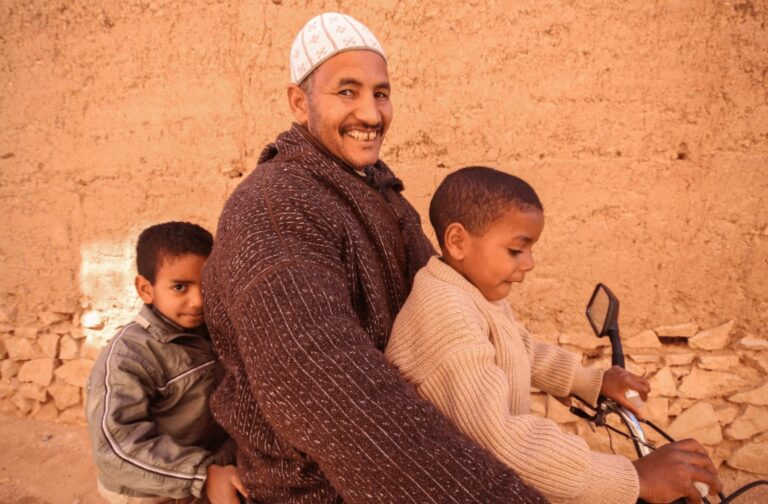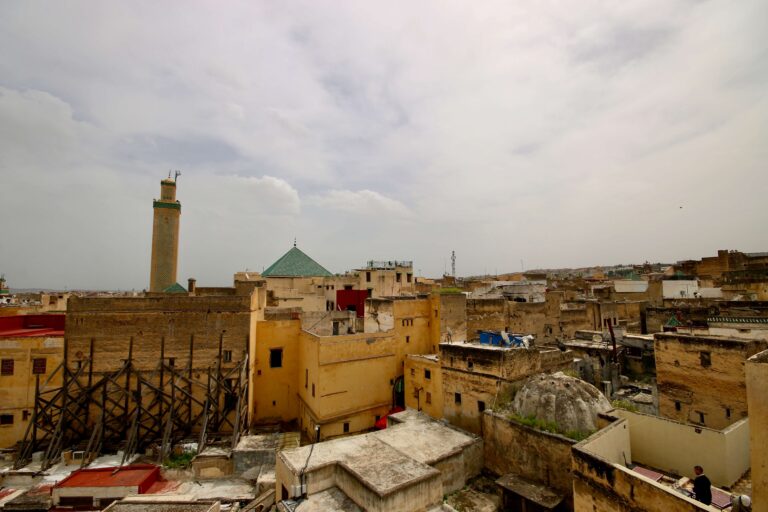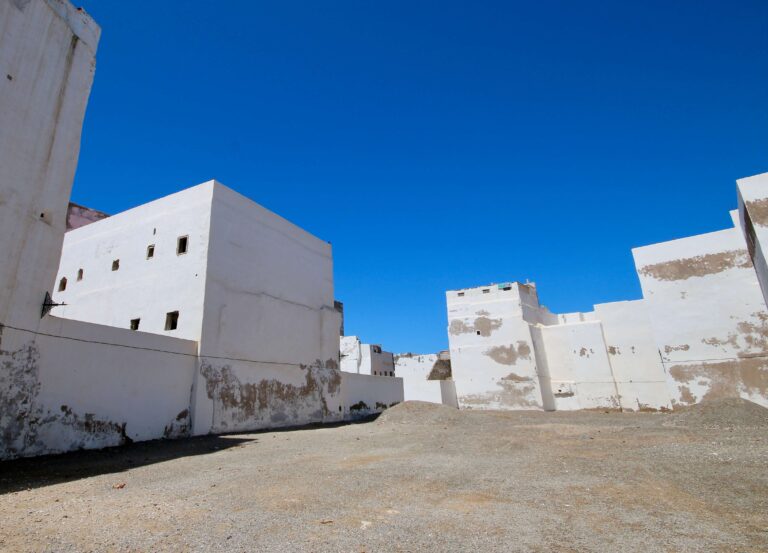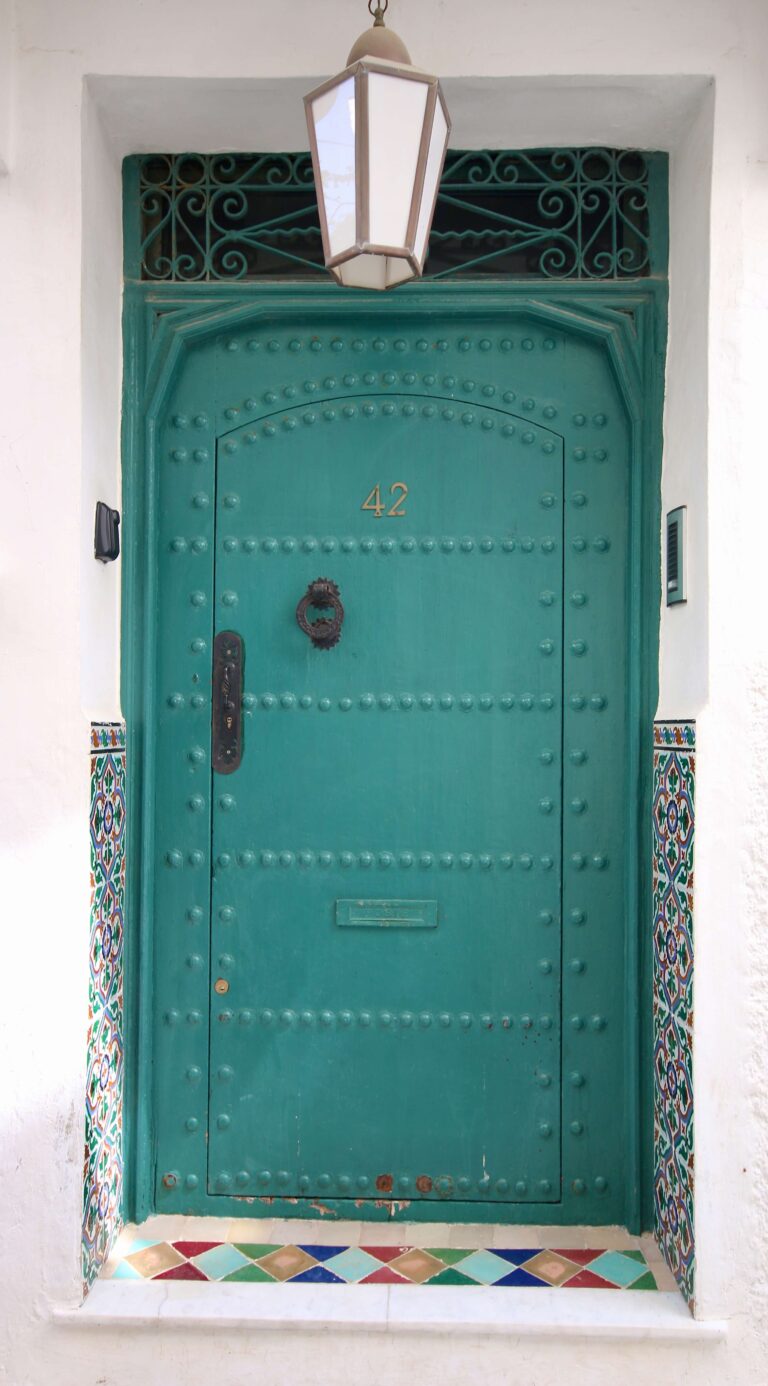10 Beautiful Buildings in Morocco to Add to Your Itinerary
Morocco is renowned for its architectural treasures, with strikingly beautiful buildings and monuments scattered throughout the country.
From the opulently decorated mosques and madrasas of the imperial cities to the earthen-walled kasbahs and ksours of the south, the country’s diverse architectural traditions reflect its cultural, geographical and religious heritage.
If you’re a fan of architecture (like I am), Morocco is a destination to add to your bucket list. Trust me when I say there is an abundance of inspiring buildings and monuments to explore.
In this article, I’ll introduce 10 of the most beautiful buildings in Morocco to help you plan an architecture-focused itinerary around the country.
More information about Morocco’s unique architecture can be found in this detailed article.
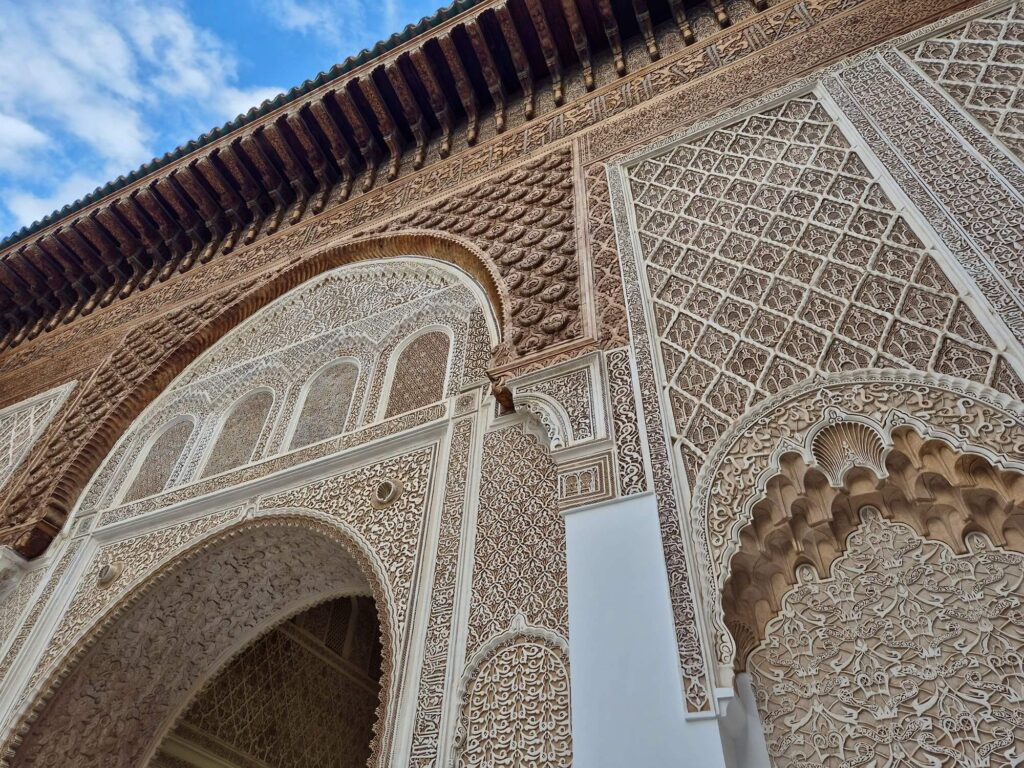
Disclosure: This article contains affiliate links, meaning I earn a small commission when you make a purchase. Affiliate links cost you nothing and ensure my content stays free!
Bahia Palace, Marrakech
Blending elements from Islamic and Andalusian design, Bahia Palace is a one-of-a-kind palatial residence in Marrakech. It was originally established by the grand vizier Su Musa in the 1860s. In the late 19th century, it was expanded by his son Si Ba Ahmed ibn Musa.
Bahia Palace is notable for its intricate stucco latticework and ornate tiling, as well as its peaceful gardens and courtyards. A highlight is the harem courtyard with its central basin, surrounded by rooms where the women of the house once lived.
As you wander through the palace’s corridors and rooms, it’s hard not to be awestruck by the artistry and craftsmanship that have gone into creating this Moroccan gem.
In my opinion, Bahia Palace is a must-visit for architecture enthusiasts visiting Marrakech. That being said, it can get busy! Time your visit for early morning (just after it opens at 9 am) if you want the quietest experience.
Entrance fee for Bahia Palace: 100 dirhams per person
Opening times of Bahia Palace: 9 am to 5 pm
To learn more about visiting the “Red City”, check out my Essential Travel Guide to Marrakech.
Hassan II Mosque, Casablanca
Towering majestically over the coastal city of Casablanca, the Hassan II Mosque is one of the largest functioning mosques in Africa.
Completed in 1993 after more than six years of construction, the mosque was the vision of King Hassan II himself. He collaborated closely with renowned French architect Michel Pinseau to bring this grand project to life.
The mosque’s design is a blend of traditional Moroccan craftsmanship and modern engineering, topped by a 210-metre-high minaret. Artisans from across the kingdom were enlisted to handcraft the marble walls. In fact, my husband’s uncle was one of them!
The crowning touch is the retractable roof, which allows worshippers to pray beneath the stars on clear nights.
With the capacity to accommodate up to 105,000 worshippers at a time, the Hassan II Mosque is a staggering architectural feat. Its scale is hard to describe in words – you really do have to see it!
The mosque’s strategic location on a promontory overlooking the Atlantic further enhances the experience, with awe-inspiring views of the ocean from its exterior.
Entrance fee for Hassan II Mosque: 140 dirhams for adults, 30 dirhams for children over 6 years
Opening times of Hassan II Mosque: Tours run hourly between 9 am and 4 pm from Saturday to Thursday and from 9 am to 10 am and 3 pm to 4 pm on Friday.
To learn more about visiting Morocco’s biggest city, check out my Essential Travel Guide to Casablanca.
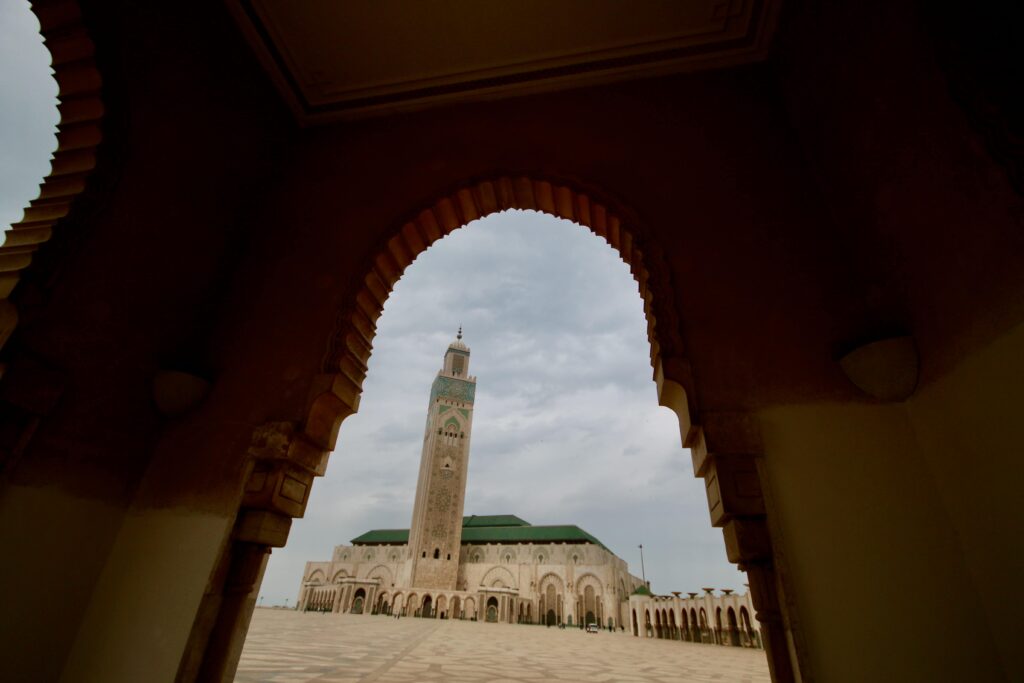
Koutoubia Mosque, Marrakech
Dating back to the late 12th century, the Koutoubia Mosque is an architectural treasure and the largest mosque in Marrakech. It’s really hard to miss, with its soaring minaret towering over the southwest corner of the medina, adjacent to the leafy walking trails of Parc Lalla Hasna.
The Koutoubia Mosque was originally founded in 1147 by the Almohad caliph Abd al-Mu’min and was entirely rebuilt around 1158. As a whole, the mosque is a quintessential example of the Almohad architectural style. It blends Moorish, Amazigh and Islamic elements into a visually striking whole.
Although non-Muslim visitors are not permitted to enter the mosque itself, there are plenty of opportunities to admire its red sandstone architecture and minaret from outside.
My favourite spot to soak in its beauty is Parc Lalla Hasna. There are several benches here beneath the green space’s orange trees where you can relax.
Rising 77 metres in height, the minaret is adorned with geometric arch patterns and crowned by a spire and metal orbs. Look closely, and you’ll notice that the opposite sides of the minaret feature alternating decorative motifs.
If you’re particularly keen to get an up-close view of the mosque, I’d recommend staying in a riad nearby. From the rooftop terrace, you’ll be able to listen to the call to prayer ringing out across the medina.
Also, be sure to admire the centuries-old foundations visible on the mosque’s northern side.
Koutoubia Mosque is one of 8 stops on my recommended one day Marrakech itinerary.
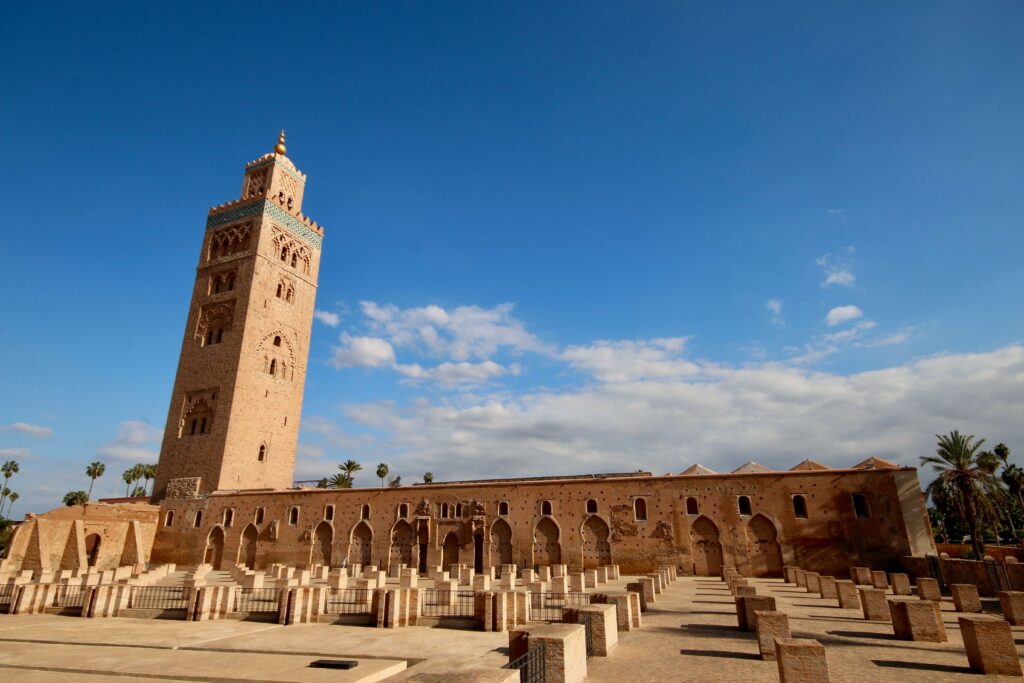
Ait Benhaddou, Ouarzazate
Strategically located along the trans-Saharan trade route, the fortified settlement of Ait Benhaddou was first established in the 11th century.
It was designed to serve the caravans of merchants and travellers journeying from the Sahara Desert to Marrakech. At the same time, it needed to protect its inhabitants from potential attack.
Today, this well-preserved ksar is one of the finest examples of pre-Saharan earthen construction in Morocco. It has been rightly designated as a UNESCO World Heritage Site for its architectural and historical significance.
The buildings that make up this adobe citadel largely date back to the 17th century. This is when Ait Benhaddou reached the height of its prominence and influence.
The primary construction material was rammed earth, a sustainable building method that involves compacting a mixture of earth, clay, sand, straw and water. Though porous, the solid walls of the ksar provided excellent insulation and shelter from the harsh elements.
Ait Benhaddou’s labyrinth of maze-like laneways weave through a collection of mud-brick kasbahs and hidden houses. Since it’s an active village, there are no gates or set visiting hours, allowing you to explore whenever you want.
While there’s no formal admission charge, you might be asked for a small donation. This helps with the maintenance of the site and supports the local residents.
To learn more about exploring this ancient ksar, check out my Essential Travel Guide to Ait Benhaddou.
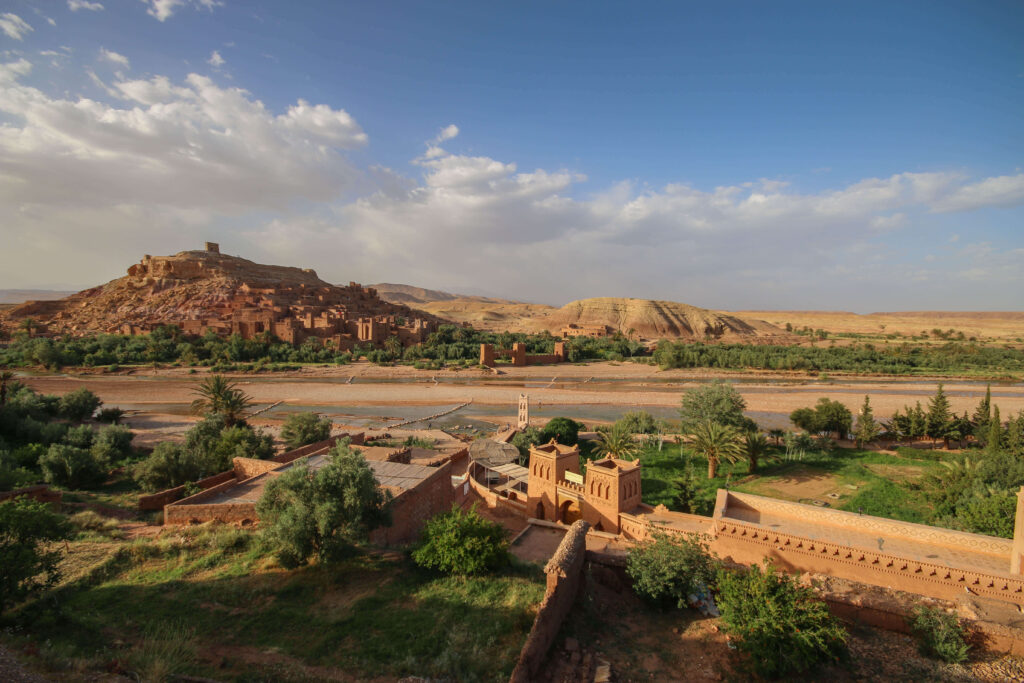
Bab Mansour, Meknes
Located in the historic city of Meknes, this monumental gateway is considered one of the most impressive in Africa.
It was originally designed as the ceremonial entrance to the royal citadel of Sultan Moulay Isma’il. Construction began in the late 17th century and was completed in 1732.
Its name pays homage to the architect and designer, Mansour al-‘Alj, a former Christian slave who converted to Islam.
Bab Mansour’s architecture is based on Almohad designs, featuring a horseshoe-arch opening flanked by square bastions. However, it also incorporates several innovative elements, such as the hollow loggia and the ornately carved marble columns. These were likely sourced from the nearby Roman ruins of Volubilis.
Perhaps Bab Mansour’s most striking feature is the intricate decoration that covers nearly its entire facade. This includes a repeating darj-wa-ktaf motif, arabesque-painted tiles and an Arabic inscription.
This artistry is best viewed from Place el-Hedim, a lively public square that’s also great for people watching.
To learn more about visiting this fascinating imperial city, check out my Essential Travel Guide to Meknes.
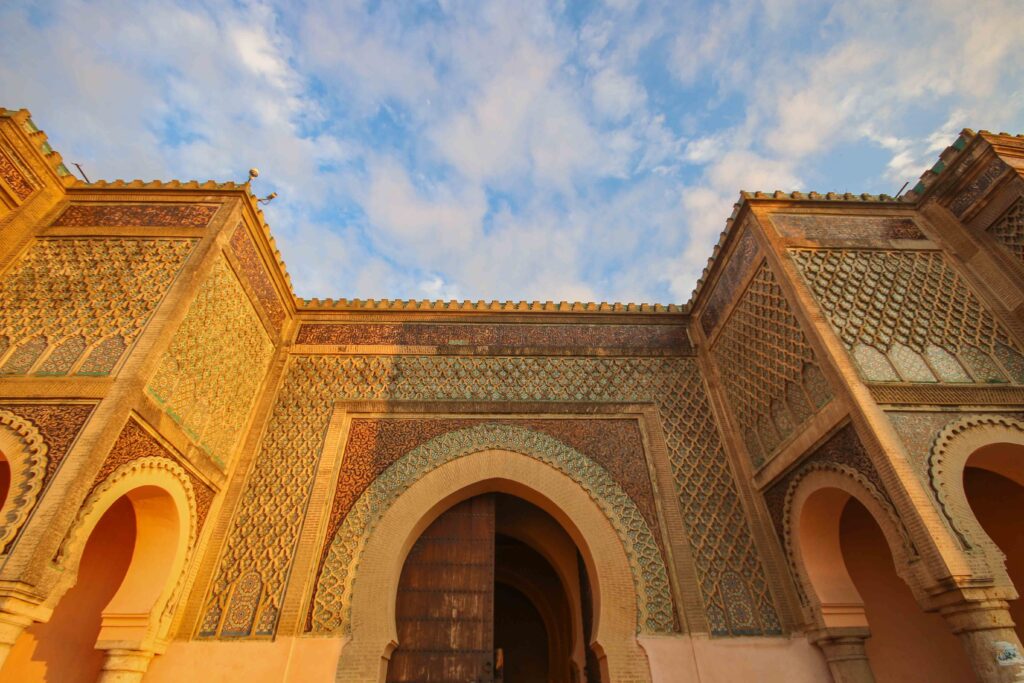
Grand Mosque, Chefchaouen
Overlooking Plaza Uta el-Hammam, this magnificent mosque dates back to the founding of Chefchaouen in the 15th century.
While the exact date of the mosque’s construction remains a point of debate, it has long served as a central gathering place. It’s here that local rulers and governors would pledge their allegiance to the Sultan of Morocco.
Chefchaouen’s Grand Mosque also housed a madrasa. Here, students would study subjects like Islamic jurisprudence, further cementing its role as an important hub of religious learning and scholarship.
Over the centuries, the mosque has undergone several restorations and is most notable for its octagonal minaret and distinctive red-tiled roof. This makes it instantly recognisable amidst Chefchaouen’s blue-hued buildings.
With its hypostyle layout featuring eight parallel aisles divided by rows of horseshoe arches, the unadorned interior stands in contrast.
While the Grand Mosque is closed to non-Muslims, you can admire its octagonal minaret from various points throughout Chefchaouen. Also, you can get a close-up view from the steps at its base.
Take note of the three tiers, each of which features blind arches, with the highest also decorated with square panels filled with zellije tiles.
To learn more about visiting the “Blue Pearl” of Morocco, check out my Essential Travel Guide to Chefchaouen.
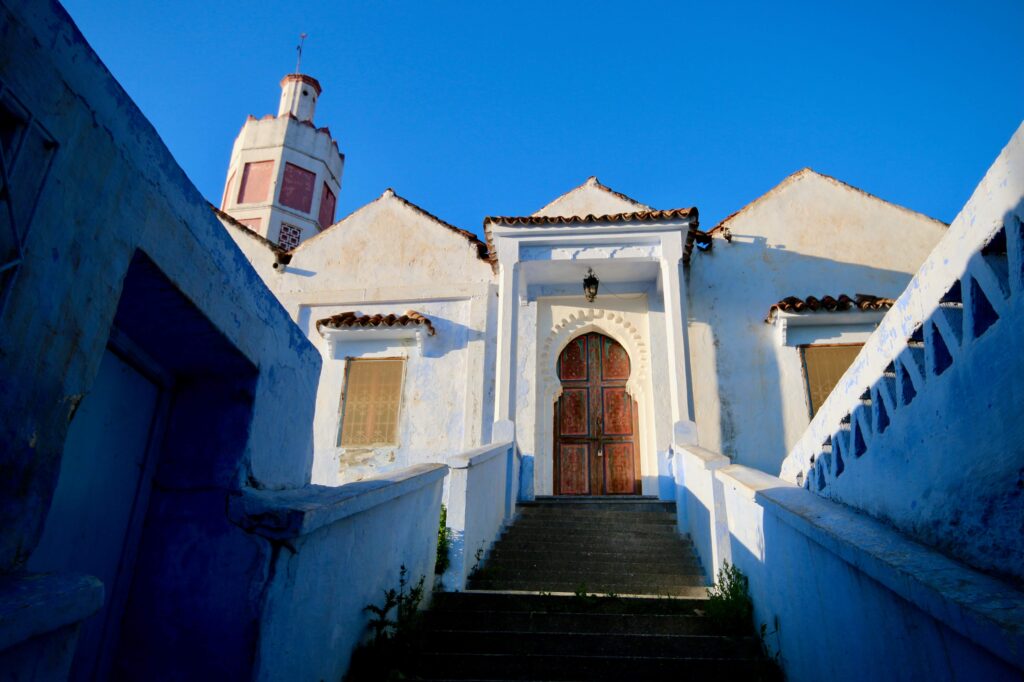
Kasbah Taourirt, Ouarzazate
This former palace of the powerful Glaoui clan stands as a testament to the strategic importance this region held along the lucrative Saharan caravan routes.
During the French colonial era, the Glaoui family was granted extensive authority in exchange for keeping the southern tribes subdued. Kasbah Taourirt reached the pinnacle of its influence in the 1930s when the clan’s power was at its peak.
Though the Glaoui chiefs themselves never actually resided within its walls, the kasbah served as the base of operations for the dynasty’s second-tier command. It housed the sons, cousins and entourages of servants, builders and craftspeople.
Today, you can explore the partially ruined yet still inhabited kasbah. With the help of a local guide, you can wander through the former reception rooms and kitchens that radiate out from the main courtyard (once a bustling souk).
From the upstairs vantage points, there are wonderful views of the kasbah’s remaining structures. You can also see the Oued Ouarzazate and High Atlas mountains in the distance.
Top tip:
Kasbah Taourirt was extensively damaged during the 2023 earthquake and much of the site is off-limits while restoration works are underway. Keep this in mind if you plan on visiting and set your expectations accordingly,
Entrance fee for Kasbah Taourirt: 30 dirhams (+ 100-150 dirhams for a guide)
Opening times for Kasbah Taourirt: 10 am to 5 pm
To learn more about visiting this desert city, check out my Essential Travel Guide to Ouarzazate.
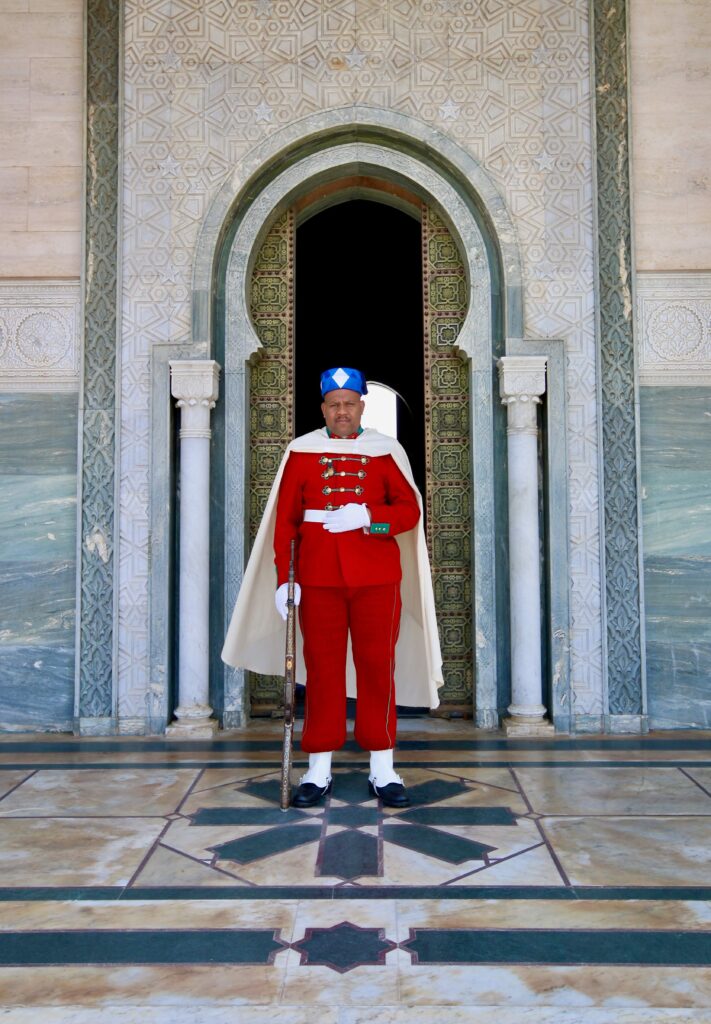
Mausoleum of Mohammed V, Rabat
Serving as the final resting place for two Moroccan kings is this striking white-marble structure, topped with a green pyramid-shaped roof. It was commissioned by King Hassan II to honour his father, the late King Mohammed V.
The Mausoleum of Mohammed V was designed by Vietnamese architect Cong Vo Toan and skilfully blends traditional Moroccan elements and motifs with modern materials.
Armed guards stand at attention outside the mausoleum, underscoring the reverence and significance of this site.
Upon entering, the standout architectural features include the zellige tiles adorning the walls and a mahogany wood dome decorated with coloured glass.
The tombs of Mohammed V, his son King Hassan II and Prince Abdallah are bathed in the warm glow of large chandeliers, creating a really solemn atmosphere.
Forming part of the Mausoleum of Mohammed V complex is the Hassan Tower, an unfinished minaret that was once part of a 12th-century mosque. Rising to 45 metres, it is surrounded by the remains of 348 columns that would have served as the foundations of this monumental building.
Entrance fee for Mausoleum of Mohammed V: Free
Opening hours for Mausoleum of Mohammed V: 8 am to 6 pm daily
The Mausoleum of Mohammed V and the Hassan Tower are both stops on my recommended one day Rabat itinerary.
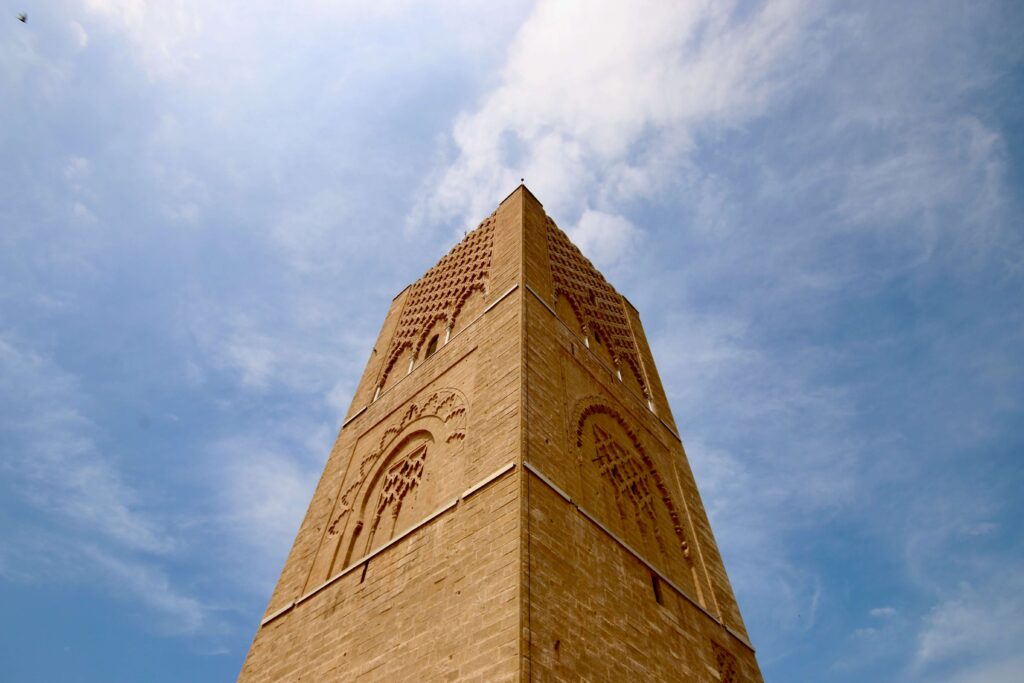
Ben Youssef Madrasa, Marrakech
Named after its adjacent mosque, this stunning Islamic school has borne witness to centuries of cultural and religious tradition. Today it is designated as a UNESCO World Heritage Site.
Ben Youssef Madrasa was initially established in the 14th century. It was designed to serve as a centre for the study of Islamic theology and Quranic teachings.
Considered a striking example of Saadian design, the current madrasa was commissioned in the mid-16th century. It was once the largest of its kind in North Africa!
Beyond its role as a school, the madrasa also functioned as a mosque and a library. As such, it was a hub of spiritual, intellectual and cultural activity in medieval Marrakech.
Despite falling into disrepair in the 18th century, the madrasa was restored in the 19th century by the Alaouite Sultan Moulay Hassan I. He breathed new life into the institution as an active Islamic school.
Today, visitors can admire its magnificent central patio, adorned with stunning tiling and delicate latticework that exemplify Moorish artistry. Be sure to climb to the second story to explore the humble dormitories.
Keep in mind that Ben Youssef Madrasa gets incredibly busy. So time your visit for early morning or late afternoon when the crowds tend to thin out.
Entrance fee for Ben Youssef Madrasa: 50 Dh
Opening times for Ben Youssef Madrasa: 9 am to 7 pm daily
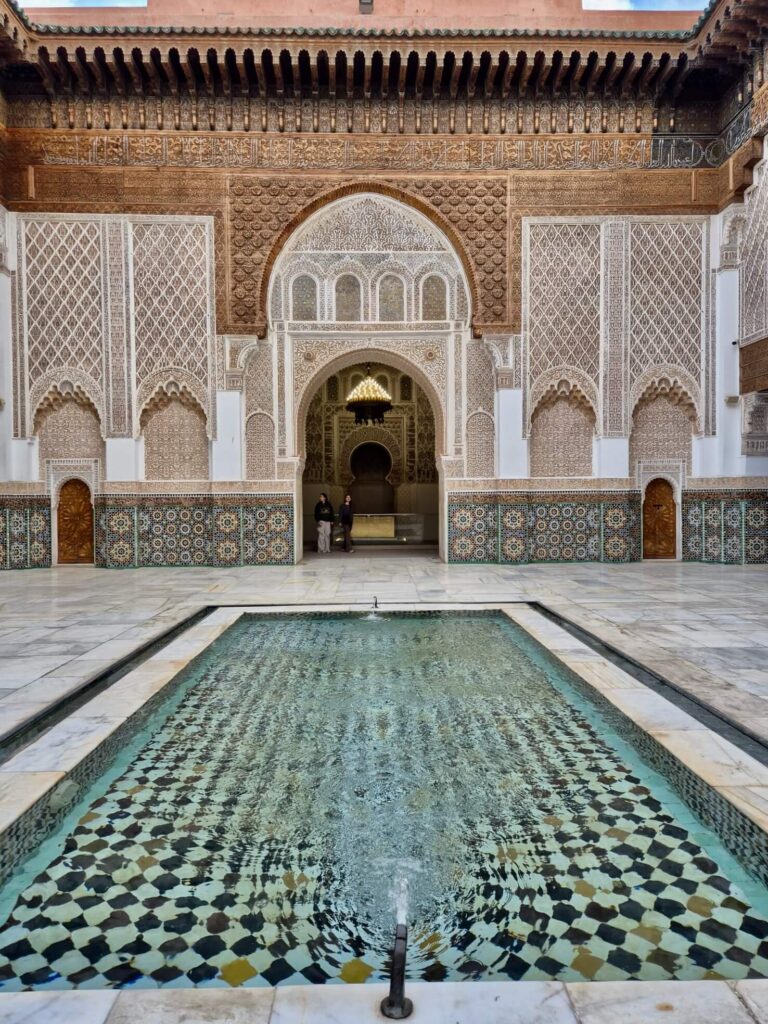
University of Al Quaraouiyine, Fes
Renowned as the oldest continuously operating university in the world, Al Quaraouiyine traces its origins all the way back to 859. After its founding by Fatima al-Fihri, it went on to become one of the leading spiritual and educational centres of the Islamic Golden Age.
Today, it is a functioning mosque and is only accessible to devotees of Islam. That being said, glimpses of the elaborately decorated interior can be had through its open doors.
Though it began in a fairly simple architectural style, the university and its attached mosque have undergone countless transformations and embellishments over the years. This has resulted in a captivating blend of styles that reflect Morocco’s unique architectural heritage.
Prominent among these is the Andalusian aesthetic, which came to prominence following the arrival of Muslims fleeing the Spanish Reconquista. This presents itself in the use of geometric floral patterns and ancient kufic calligraphy.
The University of Al Quaraouiyine’s golden age, however, is considered to be the Marinid dynasty (mid-13th to mid-15th centuries). During this period, a number of grand additions were made to the complex.
Towering columns, arched entryways and a massive chandelier were incorporated into the design. Meanwhile, the original minaret was preserved beneath layers of plaster and bright white paint.
Adjacent to Al Quaraouiyine is Al Attarine Madrasa, another Fes architectural treasure that is open to non-Muslims. This Marinid beauty centres around an elaborately decorated central courtyard complete with stucco carvings and calligraphic texts.
Both Al Quaraouiyine and Al Attarine are stops on my recommended one day Fes itinerary.
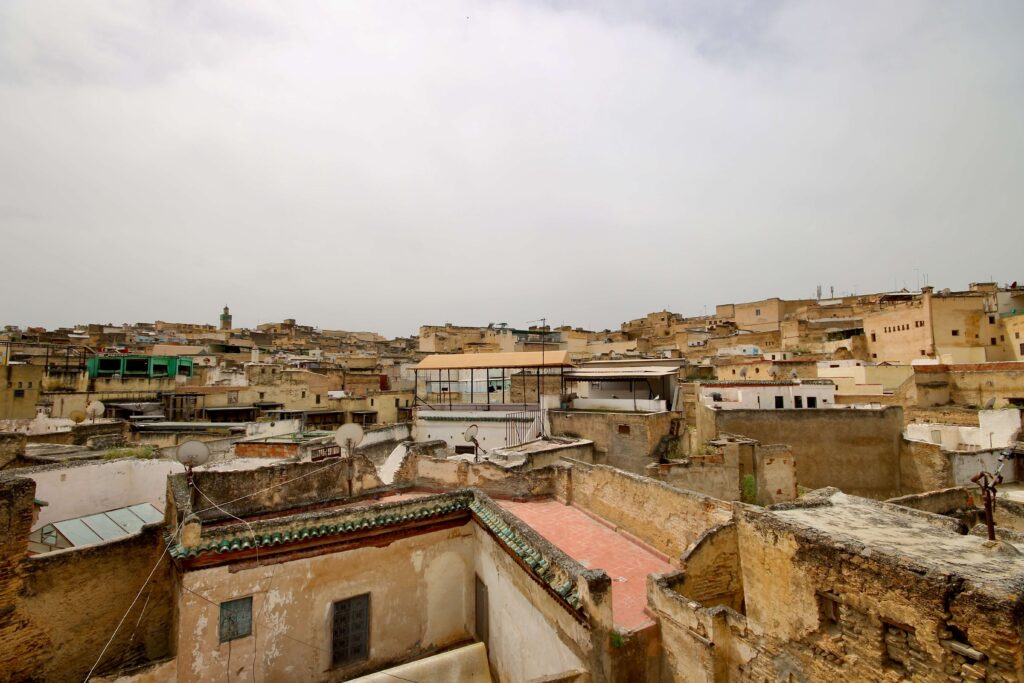
Exploring Morocco’s most beautiful buildings
Architectural treasures abound in Morocco and you never have to go far to find beautiful buildings. In most cities, they are concentrated in the historic medinas. The exceptions are those found in the modern metropolises of Rabat and Casablanca.
Remember that mosques in Morocco are closed to non-Muslims, except those on guided tours visiting Casablanca’s Hassan II Mosque. However, most of Morocco’s other architectural treasures are accessible to everyone.
If you’re not travelling around Morocco with a guide, it’s sometimes possible to hire the services of one at the entrance. Their knowledge will be specific to the building/site, so it’s well worth the investment.
If you want a more detailed explanation of the difference between a kasbah and a ksar or a madrasa and a minaret, check out by introductory guide to Moroccan architecture.
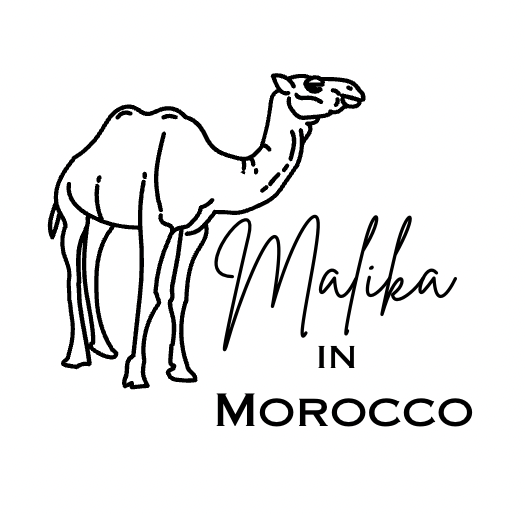
PLAN YOUR TRIP WITH MY FAVOURITE RESOURCES:
Find hotels via Booking
Book tours and attractions via Viator or GetYourGuide
Find a rental car via Discover Cars
Book flights via Kiwi or Booking
Search for buses and trains via 12Go or Omio
Get travel insurance via SafetyWing
Buy a digital eSIM with Airalo
By purchasing through my links, you’ll be supporting my website at no additional cost to you
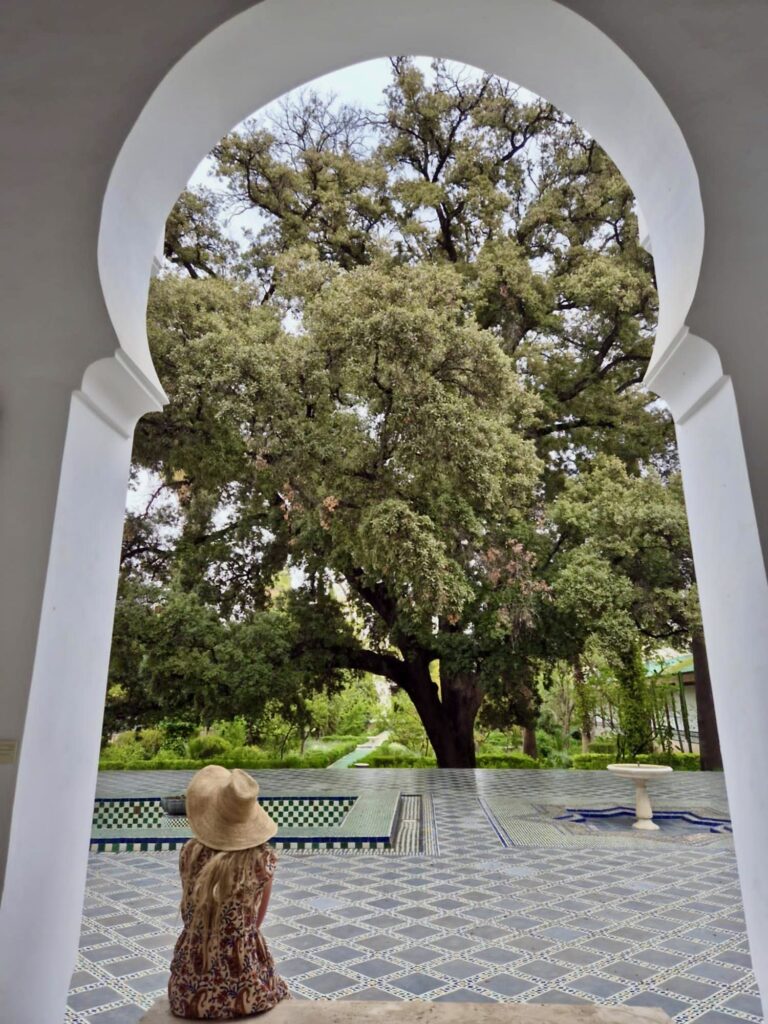
About Me
I’m Malika, a global traveller who first visited Morocco in 2014 before marrying a local and settling down in a little village on the Atlantic coast. Over the years, I’ve developed an intense love for Morocco, its incredible landscapes, storied cities and the exceptionally generous hospitality of its people.
Malika in Morocco is a place to share my years of experience exploring the country, from north to south and from the Atlantic Ocean to the Sahara Desert. As a resource for travellers visiting Morocco, I want to encourage others to experience this captivating destination the way they desire, whether that’s independently or under the expert guidance of local tour operators.
I believe strongly in supporting responsible and sustainable tourism initiatives while inspiring travel experiences that are life-impacting and mutually beneficial for both travellers and locals.
-
Moroccan Architecture: Riads + Kasbahs + Madrasas + Babs
Morocco’s architectural heritage reflects the country’s diverse geography and rich history, woven together through successive waves of settlement and military conquest. It’s a testament to its many cultural influences, from the ancient Roman ruins of Volubilis to the historic ksars along the Saharan trade routes and the madrasas of the Saadian and Marinid dynasties. If…
-
Meet the indigenous Amazigh people of Morocco
Often referred to as “Berbers”, the Amazigh people of Morocco are a diverse collection of ethnic groups Indigenous to North Africa. While they are concentrated primarily in the Maghreb region (Algeria, Libya, Mauritania, Tunisia and Morocco), they can also be found in northern Mali and northern Niger. Predating the arrival of Arabs in the region,…
-
Should I Get Travel Insurance For Morocco? Everything to Know
Whether you’re travelling to Morocco on a one-off trip or living a semi-nomadic lifestyle in the country, travel insurance should be a top priority before you head off. I’m someone who never travels abroad without travel insurance. It was drummed into me by my parents when I was young that it just wasn’t worth the risk. After…
-
Visiting Morocco’s Sahara Desert: Everything You Need to Know
Planning on visiting Morocco’s Sahara Desert? Discover everything you need to know to plan an incredible visit, from the best tours and self-drive itineraries to highly-rated desert camps. One of the most transformative experiences I’ve had in Morocco was spending a night under the star-studded sky of the Sahara Desert. Not only did I feel…
-
Renting a Car in Casablanca: Everything You Need to Know
Thinking about renting a car in Casablanca? Discover everything you need to know, from road conditions to safety issues and car hire costs in Morocco. Casablanca is Morocco’s main aviation gateway and the first port of call for many international travellers. So it makes sense that it’s also one of the best places to rent a car…
-
Renting a Car in Marrakech: Everything You Need to Know
Renting a car in Marrakech is a fantastic way to explore southern Morocco on your own terms. This is particularly ture if you want to visit the Sahara Desert, follow the Route of 1000 Kasbahs or venture into the spectacular gorges of Dades and Todra. While the train and bus networks in Morocco cover a…
